You've probably heard of carbon footprint. But do you know about water footprint? Water footprint is a measure of both the indirect and direct water use of an individual, community, business, city, or county. Water footprint is just as significant as carbon footprint though it's often overlooked.
Direct water footprints occur when we use water directly, such as when we shower, brush our teeth, wash our clothes, cook, drink, wash dishes, garden, and more. Indirect water footprints occur when we use products that require water to produce, such as growing food, making clothes, generating electricity, diluting pollutants arising from production, processing meat products, and more.
Indirect water footprint accounts for greater consumption compared to direct water consumption. For instance, In Europe, the average person directly consumes between 100-150 liters of water a day and between 1,500 and 10, 000 liters indirectly per day. With the rise in the freshwater crisis globally, it's now more important than ever to reduce our water footprint. From reducing meat consumption to reducing travel, there are a myriad of ways we can reduce our footprint. Read on to learn more about lowering your water footprint.
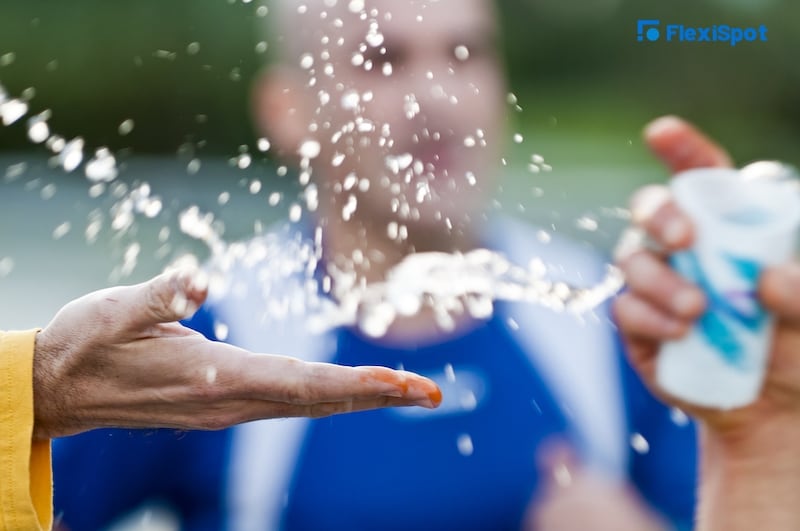
Why is Water Footprint Important?
Water footprint indicates the total volume of water consumed by a particular entity, such as an organization, person, country, product, service, etc., within a given period. Water footprint is crucial to monitor freshwater availability and provide information on the necessary interventions that should be undertaken in a particular region or within a specific community.
Freshwater is increasingly becoming scarce thanks to the raging climate change compounded by increased pollution of the available freshwater sources. With the severity and far-reaching impacts of dwindling freshwater resources across the globe, water footprint levels are vital for conserving water and implementing the necessary interventions.
Water footprint helps us understand the link between freshwater scarcity and the daily consumption of food and various products. By creating such a link, it's possible to better conserve freshwater by reducing the use of products with large water footprints. In essence, precise information on water footprints of communities and organizations will enable us to achieve more sustainable and equitable use of freshwater via practical conservation efforts.
Calculating Your Water Footprint?
The Water Footprint Network website has an online calculator that estimates your personal water footprint depending on your gender, dietary habit, gross yearly income, country of residence, and energy consumption patterns.
You could also calculate your Water Footprint by using the extended water footprint calculator developed by researchers at UNESCO-IHE. To determine your overall water footprint, the calculator takes into consideration several aspects of your personal life, including your country of residence, food consumption, domestic water use (both indoors and outdoors), and industrial goods consumption.
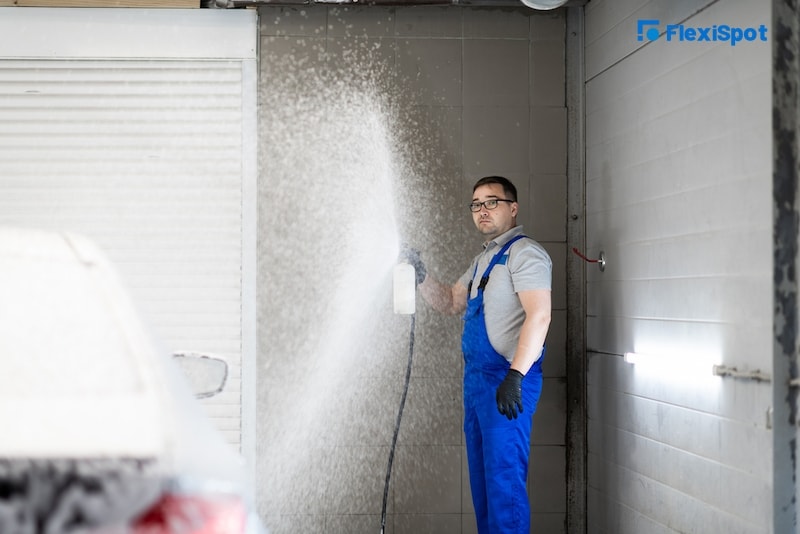
Why Should my Business bother about its Water Footprint?
Businesses should be concerned about the environmental impact; this is part of their corporate duty. As such, reducing the water footprint should be part of every businesses' mandate, just like reducing the carbon footprint. Businesses reinforce their corporate image and strengthen their brand name by being concerned about their water footprint as part of their environmental mandate.
Also, businesses, like any other entity, are vulnerable to the freshwater crisis being experienced across the globe, and it can significantly hinder their operations. Water is an essential part of production in most manufacturing businesses, and its absence can bring operations to a halt. For instance, think about a brewery; it cannot conduct its operations without freshwater. Therefore, every business should be wary of its water footprint to conserve water and maximize its utility.
Last but not least, businesses should be accountable for their water footprint as per the set legislation. Most governments across the globe have set the desired water footprint that every business should achieve based on their specific industry.
Proven Ways to Reduce Water Footprints
There are different ways to reduce water footprints depending on your lifestyle, country of residence, dietary habits, industrial goods consumption, and more. The best way to reduce your water footprint is to start by taking a water footprint quiz to find out exactly how much water you use on a daily basis. Find out how big your water footprint is by filling out this questionnaire. Below are ten ways you can reduce your water footprint.
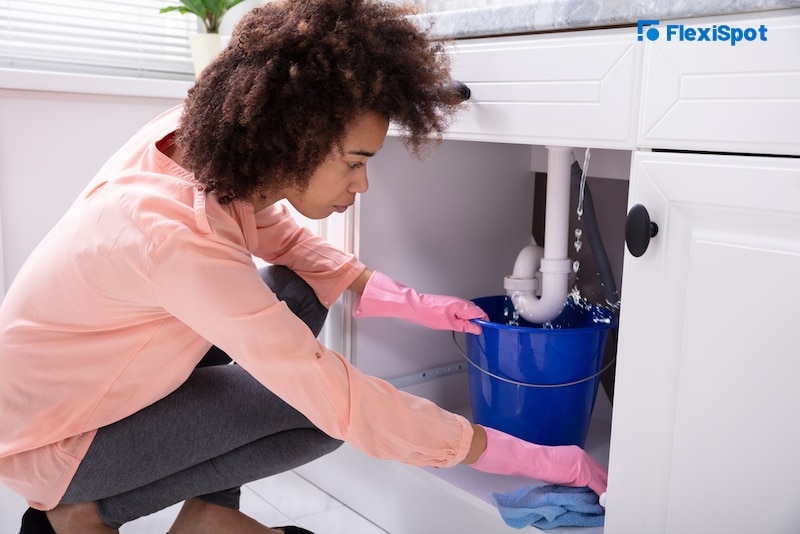
At Home
You can reduce water footprints at your home by making small changes to your lifestyle and daily routine at home. Reduce water footprints by implementing the following changes.
Repair Leaking Faucets and Pipes
On average, a slow leaking faucet/pipe wastes over 7 gallons per day and could even lose over 30 gallons of water depending on the intensity of the leak. You can reduce your water footprint at home by getting in touch with a qualified plumber to inspect your home piping system and repair cracked pipes and leaking faucets. This way, you'll greatly reduce water wastage and consequently reduce your water footprint.
Reuse Water
Another practical way of reducing water footprints at home is by reusing water. There are different ways you can reuse water at home. For instance, you can recycle leftover ice cubes in your drink by tossing them to your backyard garden or house plants rather than pouring the ice cubes into the sink. Also, when washing your veggies and fruits, you can recycle that water by watering your plants instead of pouring it in down the drain.
Capture Rainwater
This can be done by installing a rainwater catchment system on your property. This will allow you to collect and store rainwater, which you can then use for watering your plants or garden or even for drinking if you have a filtration system. Not only does this help reduce your water footprint, but it can also save you money on your water bill!
Use Eco-friendly Cleaning Products
Most non-biodegradable cleaning products contain Sodium Lauryl Sulfate (SLS), which generally functions as a forming agent and is activated when it comes in contact with water. SLS and other foaming agents require lots of water to be washed off surfaces resulting in more water use as compared to natural, biodegradable cleaning products such as vinegar or baking soda.
Biodegradable cleaning products like natural cleaning products, e.g., tea tree oil, lemon, baking soda, vinegar, and phosphate-free detergents, can greatly reduce your water footprint at home. Using such products to clean your home does not only reduce your water consumption but is also less harmful to the environment as they are biodegradable.
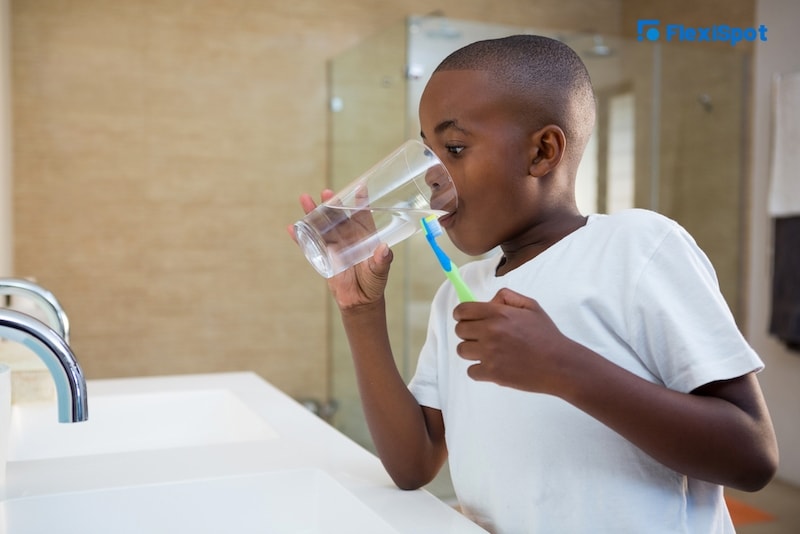
Bathroom (Showering)
Keep your Shower under 5 Minutes
One effective way of lowering your water footprint at home is by taking shorter times in the shower. You can set a timer to take under 5 minutes in the shower to reduce water usage and consequently lower your water footprint.
Place Water-Saving Shower Heads to Tap Fittings
Showerheads to tap fitting in your bathroom come in handy to reduce water usage. Also, it's pretty effective to shower under a wide water spray as opposed to a narrowed, heavy water stream. The latter often wastes lots of water owing to the high pressure coupled with the high volume emanating from the tap. Showerheads have a sprinkling system that saves a great deal of water.
Place a Bucket Under the Shower
Another effective means of saving water in the bathroom is by placing a bucket under the showerhead to accumulate all that excess water from the shower that usually flows down the bathroom drain. Once you've finished showering, you can recycle that water by using it to flush the toilet or water your lawns or gardens.
Turn off the Tap When Brushing Your Teeth
It's a common practice to leave the tap running all through while brushing your teeth. This practice wastes lots of freshwater. You can save water by turning off the tap while brushing your teeth or even fetching water into a glass and using it to brush your teeth.
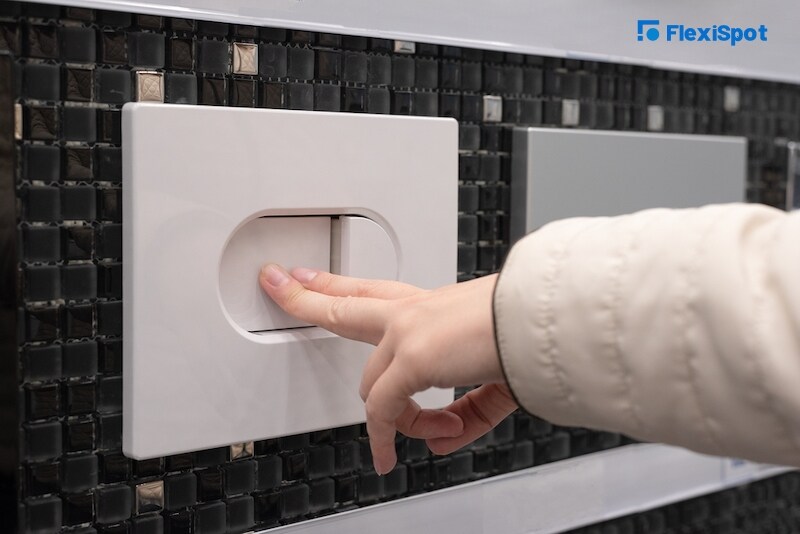
Toilet
Install Water-Saving Toilets
You can reduce your water footprint by installing water-saving toilets in your home. These toilets leverage pressure or gravity to reduce the amount of water needed to channel waste via the plumbing system and onto the sewerage system. While installing a water-saving toilet could amount to additional expenses for your home, it's totally worth it for your reduced water usage.
Flush Less
"if it's yellow, let it mellow"
Flushing toilets as infrequently as possible can significantly cut back on the amount of water used on a daily basis. Flush only when needed and always close the toilet's lid after every use.
Install a Dual-flush Toilet
This will allow you to choose between a small or large flush, depending on whether it's liquid or solid waste.

Diet and Food
Eat Less Meat
Meat, specifically red meat, is one of the most water-intensive proteins, needing close to 15 000 liters of water per kg. Lowering your red meat consumption would significantly reduce your water footprint. Alternatively, you could also opt for less-water intensive meat such as chicken or substitute meat with proteins such as lentils, peas, beans, and more. This way, you'll be able to save lots of indirect water and lower your water footprint.
Consume less Processed Food
Water is required at virtually every stage of food processing, including sanitizing, canning, refining, packaging, etc. Cutting back on processed food consumption and eating more organic and whole foods such as vegetables and fruits would greatly save on indirect water consumption and reduce your overall water footprint.
Eat More Local Food
Eating locally produced food saves on the indirect water used to transport the food and supports the local community. This, in the long run, reduces your overall water footprint.

Clothing
Avoid Fast Fashion
Fast fashion is one of the biggest culprits when it comes to increased water consumption. The textile and apparel industry is one of the world's top polluters, and the production of synthetic fabrics like polyester requires a staggering amount of water.
So the best way to reduce your water footprint is to avoid fast fashion and buy clothes made from natural fibers like organic cotton and wool instead, as they require less water to produce than polyester or acrylic.
In addition to reducing your own consumption of fast fashion, you can also advocate for more sustainable practices among your favorite brands. Demand transparency from companies about their supply chains, insist on environmentally friendly materials and manufacturing processes and vote with your dollars by supporting brands that are committed to sustainability.
Save your Dirty Clothes
Washing two half-loads of laundry utilizes more water and energy as compared to washing a full load of clothes. Wash full loads of laundry, using cold water whenever possible. This will save both water and energy.
This principle also applies when using the dishwasher.
Second-Hand Clothing
Finally, promoting recycling and repairing clothing rather than buying new clothes can also help reduce the amount of water used in the fashion industry.
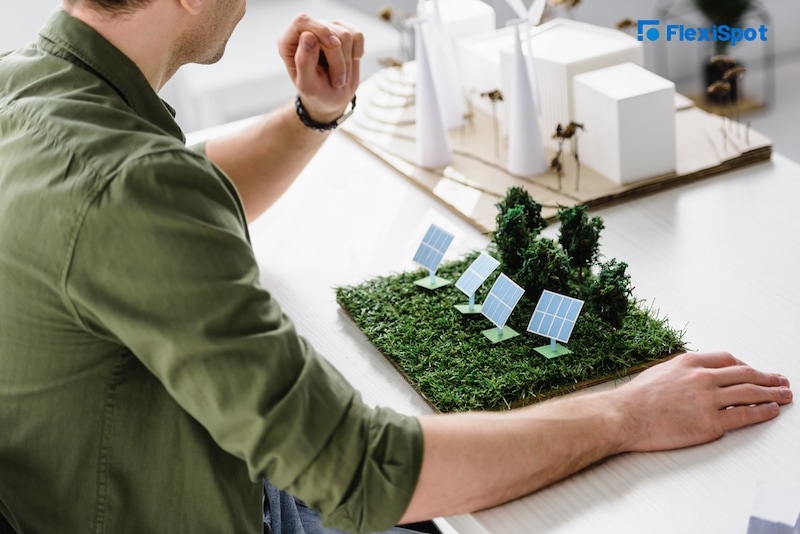
Energy Source
Use Less Electricity and Increase Solar/Wind Power
While using appliances, you should consider using solar/wind power over electricity. Hydroelectric power production consumes gigantic amounts of water, equating up to 20-60 gallons of water to power a 100 watt light bulb for 10 hours. Switching to solar or wind energy can significantly reduce water footprint, benefiting humans.

How Flexispot is Reducing Its Water Footprint
Flexispot is committed to reducing its water footprint to achieve the desired global usage levels. From contributing to tree planting initiatives to producing eco-friendly products, Flexispot is at the forefront of combating the growing freshwater crisis.
Bamboo has a very low water footprint as it consumes far less water than other trees. It doesn't require any additional irrigation, doesn't require chemical/fertilizer/pesticide use, and also produces minimal waste during harvesting.
Flexispot bamboo products are eco-friendly, great at absorbing UV radiation, hypoallergenic, moisture resistant, and quite durable. ETherefore, please make a point of purchasing our products and reducing your water footprint for the better.
Conclusion
Every entity, both individuals and organizations, should be concerned with reducing their water footprint owing to the ongoing freshwater crisis. There are ways we can all reduce our water footprint and contribute to making an impact. Some of these changes may be easier than others, and some will require more effort. Reducing your water footprint begins with minimizing water wastage and making more informed lifestyle changes that are aimed towards water conservation. Reducing our water footprints is one way to conserve freshwater and ensure the precious commodity is fully available to meet our needs now and in the coming years.
What will you do today to reduce your water footprint?